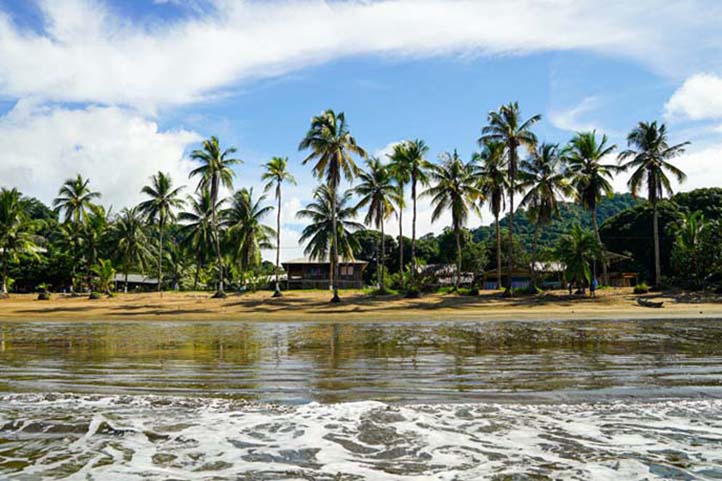
Our methods include trapping the birds in mist nets that we position in the forest canopy, taking morphological measurements, applying color bands for subsequent identification, and attaching a small radio to the tail before releasing the bird to the wild. Since 2002, CTR has been carrying out intensive research on the Long-wattled Umbrellabird. As such, they play a critical ecological role in the maintenance of primary forest and in the regeneration of disturbed habitat. Long-wattled Umbrellabirds eat fruit and are important dispersers of large seeds of primary forest trees. In this unusual mating system, females visit the lek sites only to copulate, and take care of all other aspects of rearing young by themselves. During the mating season, males congregate every morning in lek sites, where they display to females. Males have highly evolved crests, wattles, plumage, displays, and song, and are nearly double the size of females. The Long-wattled Umbrellabird is a spectacular bird with a truly outlandish appearance.

Current population size is below 10,000 individuals, and the species is in danger of extinction. Long-wattled Umbrellabirds are sensitive to the human activity and deforestation that has been ravaging the Chocó and have suffered a population decrease of more than 20% in the past ten years. As is the case with many Chocó endemics, they are at risk.

Long-wattled Umbrellabirds ( Cephalopterus penduliger) are large birds endemic to the Chocó rainforests, meaning that they are found nowhere else on earth. Right: A small waterfall in primary Chocó rainforest Long-wattled Umbrellabirds Left: Primary Chocó rainforest, one of the most diverse ecosystems on the planet For more information on our research and training program and on volunteer opportunities, contact CTR Latin America Director Dr. Below, we provide a brief overview of our primary research projects in the Chocó. Our approach on both the social and scientific levels is based on the inclusion and involvement of local Ecuadorians. Our project combines top-level, multidisciplinary scientific research with on-the-ground training, capacity building, and education to achieve lasting conservation results. Without active conservation training and education initiatives, remaining rainforest will almost certainly be lost, with a great loss to biodiversity and to the well-being of the local populace.ĬTR is working to provide the concerted and effective conservation action that the Chocó needs. The local populace is deeply impoverished and has few alternatives to ecologically harmful practices such as slash-and-burn agriculture, timber extraction, and hunting.

In 1996, less than four percent of Ecuador’s primary forests remained and deforestation has continued at a steady pace since that survey was carried out nearly a decade ago. The Ecuadorian Chocó is a global conservation priority. It is a world-recognized Hotspot, and surveys have revealed exceptional levels of diversity and endemism in plants (especially palms), insects, and vertebrates (especially birds). The Chocó Biogeographical Region, which spans 100,000 km² of humid forest in western Colombia and northwestern Ecuador, is one of the most biologically diverse areas in the world. We have initiated and implemented cutting-edge research projects with conservation implications throughout Ecuador, with a focus on the Chocó rainforests in the northwestern region of the country.

The breadth, depth, and quality of our science is what sets us apart from other conservation organizations. Top-level scientific research is the mainstay of our efforts in Ecuador.


 0 kommentar(er)
0 kommentar(er)
